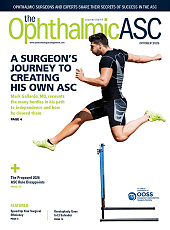Preclinical research in animal models shows that metabolic stress significantly limits the survival of photoreceptor precursor cells transplanted into the retina. The study, recently published in Stem Cell Research & Therapy, highlights the need for strategies to enhance graft longevity in degenerative retinal diseases.
To address extensive early loss of transplanted cells, even with systemic immunosuppression, the researchers conducted a detailed study using subretinal xenotransplantation of human embryonic stem cell (hESC)-derived photoreceptor precursor cells (PRPCs) into normal canine models and those with varying degrees of retinal degeneration. They found that significant loss of PRPCs occurred within the first week across all models, regardless of retinal health or degeneration, though persistent loss was more severe in eyes with end-stage degeneration.
Transcriptomic analysis of PRPCs at day 3 following the transplant revealed that oxidative phosphorylation, ATP synthesis, and mitochondrial function were all downregulated while mitochondrial dysfunction, Sirtuin signaling, and TP53-mediated stress responses were upregulated. Accompanying protein-level data showed increased oxidative stress, decreased mitochondrial function, and elevated apoptosis and necrosis. RNA velocity analysis indicated that transplanted cones and rods underwent transcriptional progression toward maturity, whereas in vitro maintained cells did not. Host retinal cells overlaying the graft demonstrated upregulation of oxidative phosphorylation and translation-related pathways, downregulation of mitochondrial maintenance, and elevated inflammatory signaling.
“This interplay between early metabolic challenges and the host environment's supportive cues underscores the need for strategies that mitigate stress while enhancing cell survival and integration,” the authors wrote. “Targeting metabolic pathways or preconditioning PRPCs to endure nutrient deprivation and oxidative stress prior to transplantation represents a promising avenue,” as does optimizing hydrogels, scaffolds, or other biomaterial carriers, they added.
The authors concluded that addressing both graft-intrinsic and host-environmental factors is essential to maximize the therapeutic potential of PRPC transplantation, with preservation of the outer nuclear layer serving as a key determinant of graft success. RP








